ART4D HAS A CONVERSATION WITH NICOLAS MEDRANO, DESIGN PRINCIPAL OF SOM, ABOUT DESIGNING HIGH-RISE BUILDINGS IN THE ASIA PACIFIC REGION, SUSTAINABILITY, AND THE FIRM’S VISION FOR THE FUTURE
TEXT: PRATCHAYAPOL LERTWICHA
PHOTO CREDIT AS NOTED
(For Thai, press here)
Designing the world’s tallest building, Burj Khalifa in Dubai;
Completing the pioneer of the International Style high-rise building that lands a place in architectural history,
Lever House in New York;
Creating a monument for the nation and the tallest building in the Western Hemisphere, One World Trade Center in New York.
Since its founding in 1936 in Chicago, SOM, or Skidmore, Owings & Merrill is an architectural, engineering, and urban planning firm that has already achieved many architectural feats. Specializing in high-end commercial projects and high-rise buildings, the office received the Architecture Firm Award, the highest honor from the American Institute of Architects twice, in 1962 and 1996. The firm is now operating globally with offices spanning across continents, such as Hong Kong, Dubai, London, New York, and Melbourne, and continues to be an influential figure in the design scene.

Photo: Ketsiree Wongwan
On 20th January 2024, Nicolas Medrano, the Design Principal from SOM flew to Bangkok to discuss the topic ‘Climate Action: Designing in the Tropics’, organized as a part of art4d’s Designer’s Saturday. In the lecture, he unveiled SOM’s ingenious strategies for designing high-rise buildings in the Asia Pacific region and the firm’s vision for the future.
Despite its many accomplishments, SOM always continues innovating and always seeks the solution for the future. But where is the firm heading? What are the timely challenges that the firm is aiming to solve? art4d finds the answer out with Nicolas Medrano.

Photo: Ketsiree Wongwan
art4d: What is the challenge that SOM is aiming to tackle?
Nicolas Medrano: Our challenges for the future are clear: climate resilience, social equity, and rapid population growth. As a firm, our focus is on decarbonizing buildings and cities, forging spaces that nurture a healthy existence. The unifying thread in all our work is society’s improvement, health, and well-being.
Our approach is pragmatic: nature-based solutions, buildings, and cities seamlessly integrated with the environment, intricately connected to the local pulse. Culturally significant and appropriate solutions drive our methodology while taking great care to use materials wisely. We work towards regenerative, renewable resources like timber and bio-based concrete – materials that heal, not harm. We look towards creating biodiversity in our buildings and cities and energy systems that are renewable and regenerative. This is our trajectory – a commitment to confronting this defining challenge of our time.
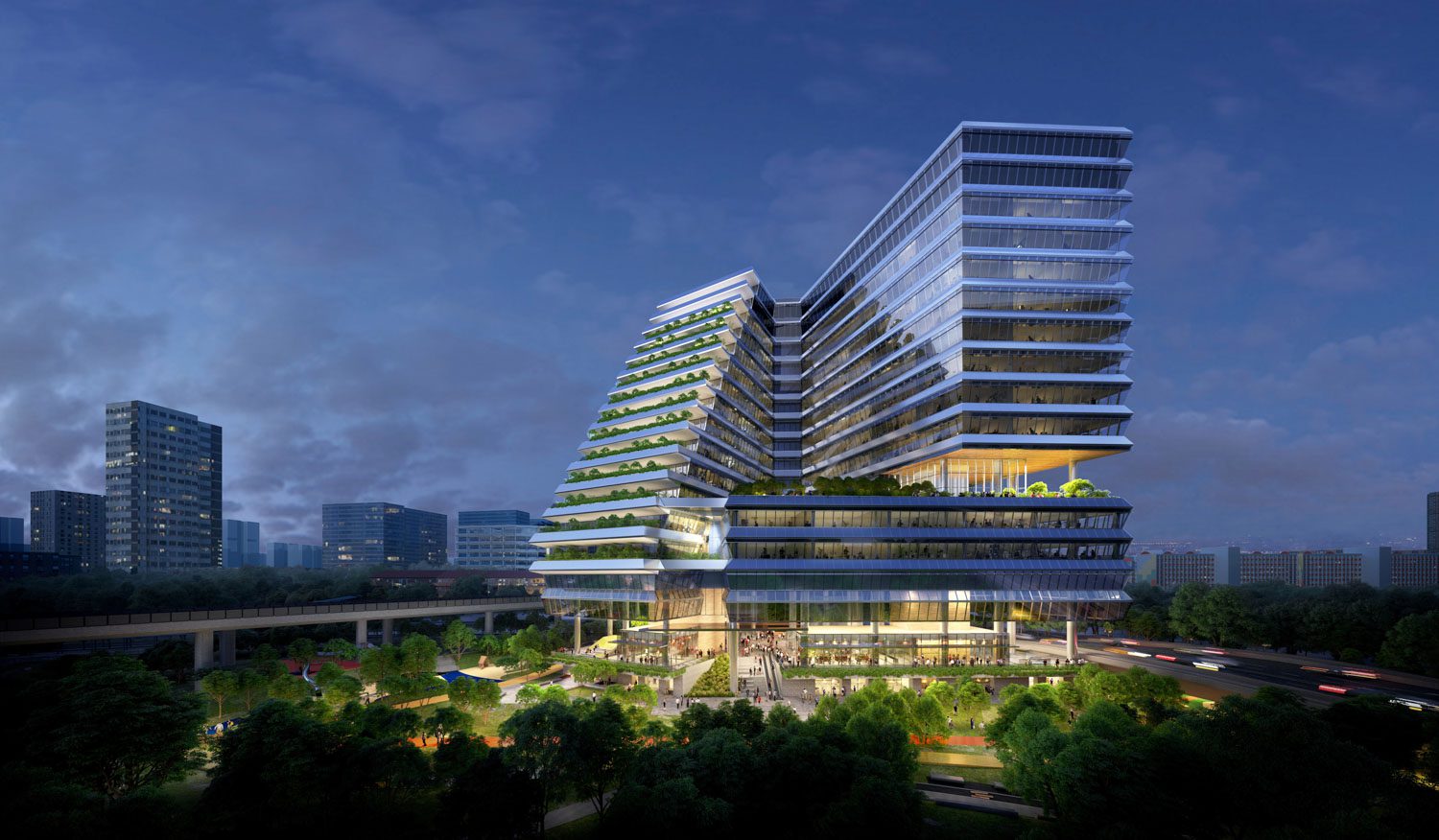
Elementum | Image: © SOM | ATCHAIN

Elementum | Image: © SOM | ATCHAIN
art4d: How about the Asia Pacific region in particular? Since you have been involved extensively in this region, what do you think are the specific set of challenges for Asia Pacific?
NM: In the rapidly growing landscape of this region, particularly evident in cities like Bangkok, the challenge lies in intelligently densifying in a resilient, responsible manner.
Cities here boast the distinctive asset of a vertical mixed-use-live-work-play-learn typology intricately linked to transit. This design empowers individuals with unparalleled accessibility to all facets of life. Eliminating the need for extensive travel enhances convenience and allows people to reclaim time for healthier pursuits, be it exercise, culinary exploration, or spending time with their families. This unique approach to densification in Asia represents a paradigm shift, a thoughtful and distinctive solution to urban development challenges.

One City Centre | Photo courtesy of Raimon Land Public Company Limited
art4d: So the solution lies beyond the building design, but also involves the building programs and the city as a whole?
NM: Absolutely, for example, in Singapore, a distinctive undertaking is our creation of a city room, which is a public space operating 24/7. This is important to the community. Situated at the base of a high-rise mixed-use building, it serves as an expansive public park beneath a sizable canopy, fostering continuous community engagement. This inclusive design facilitates diverse backgrounds who come together, day and night, for dining, exercise, and interaction. This forges a dynamic and harmonious community experience within a private development. We need more of this.
When we design for the future, we must consider everyone, beyond the boundaries of each individual site and beyond leasable areas to embrace inclusivity for all.
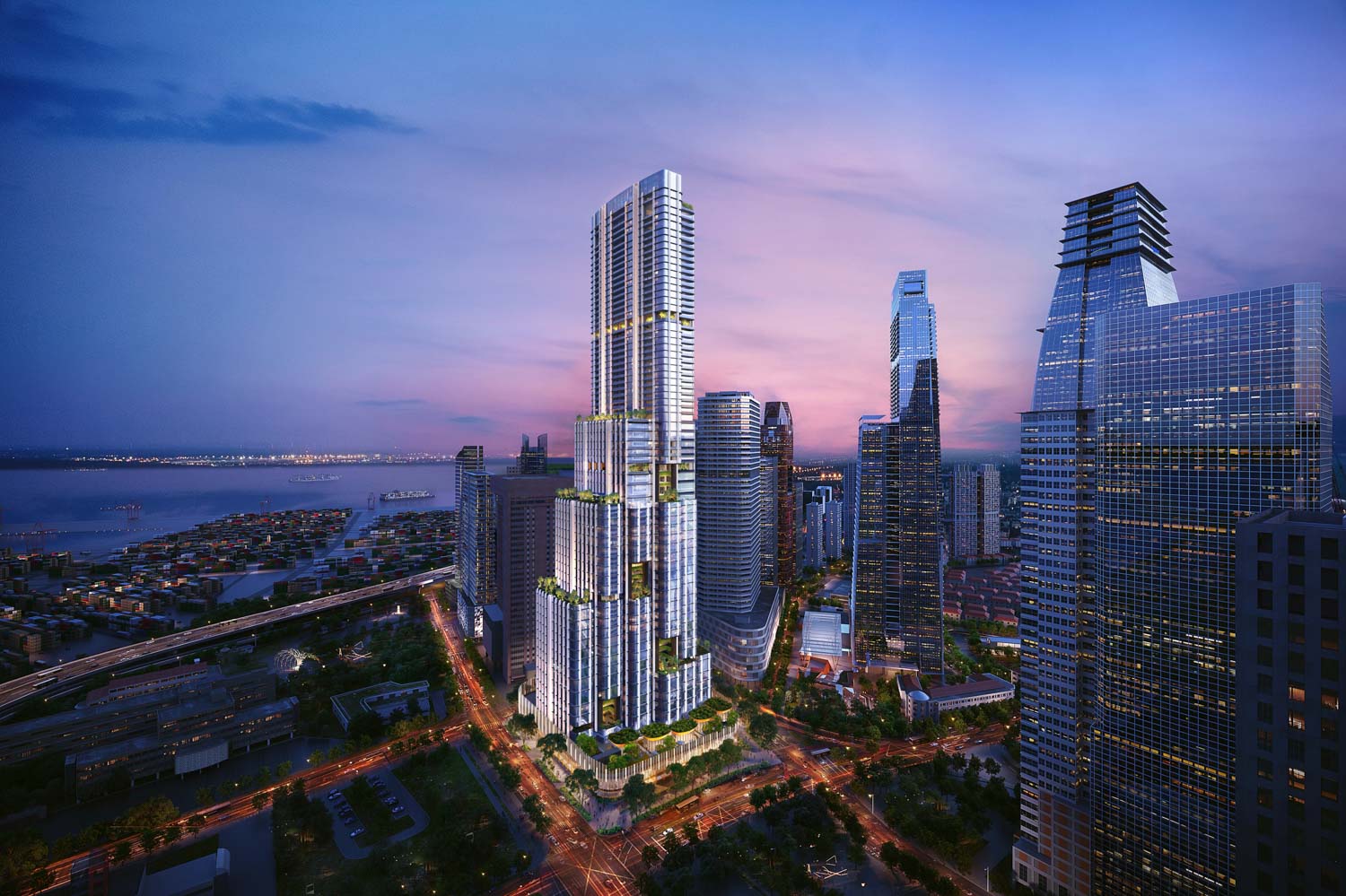
8 Shenton Way | Image: © SOM | Bezier

8 Shenton Way | Image: © SOM | Bezier
art4d: Why is it important to create a space for all types of people?
NM: Designing both private and public spaces with elements of water, shade, and natural ventilation isn’t just about aesthetics; it’s like the concept of preventive medicine, but for an entire community. These elements lower temperatures and contribute to long-term health, potentially reducing future ailments of city dwellers. What if we thought of our profession like preventative medicine? What if we considered flora, fauna, humidity, sunlight and air movement, building materials as a kind of medicinal formula?
The ultimate priority, whether economic or health prosperity, tilts towards the latter. Human well-being and nature are the greatest resources on the planet. In the grand scheme, investing in health is an investment in our prosperity as a species.
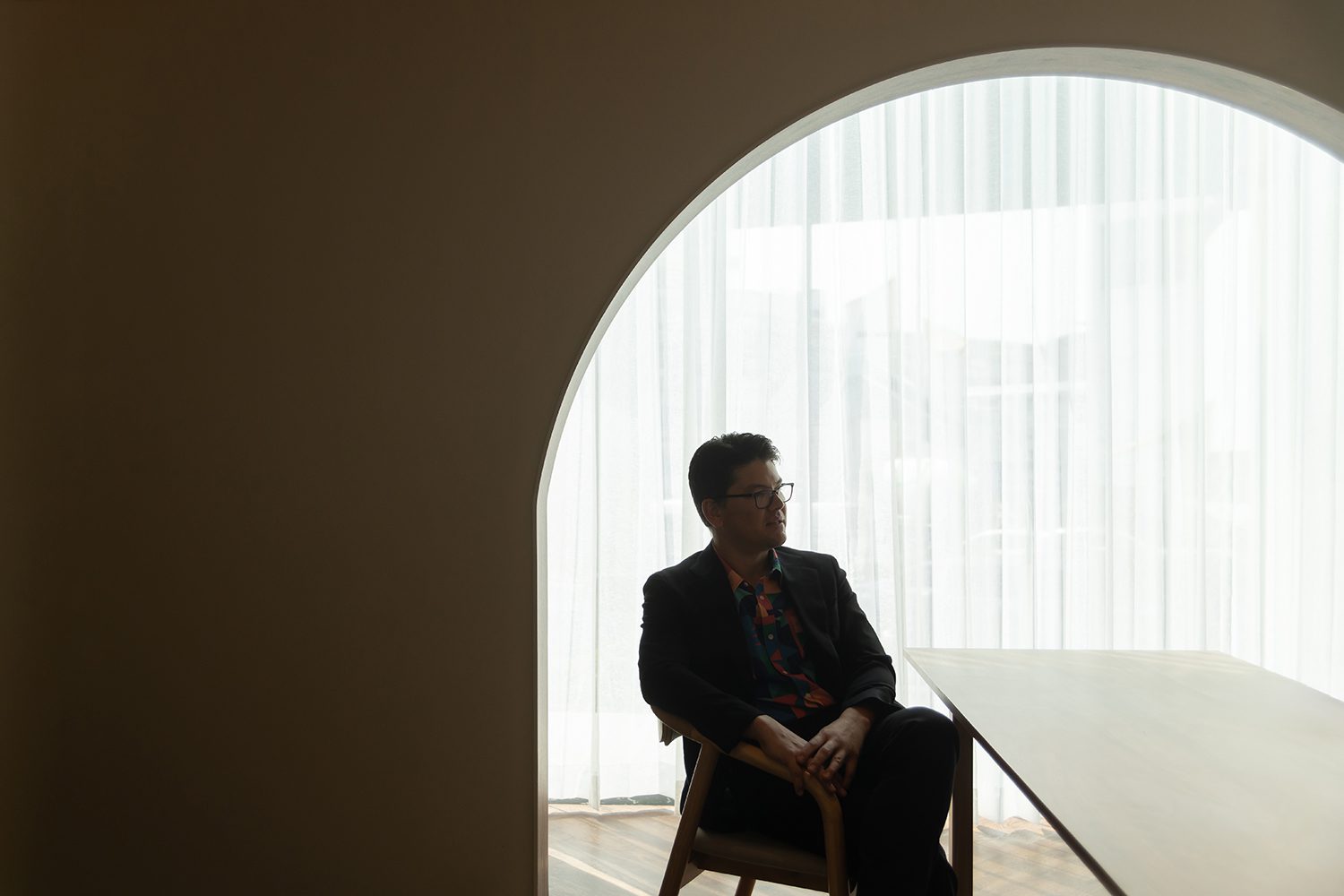
Photo: Ketsiree Wongwan
art4d: ‘Sustainability’ has been a key consideration in architectural design. What does this term mean to you?
NM: To me, sustainability is about creating environments that promote longevity for both the planet and its inhabitants. It involves creating resilient spaces and buildings that adapt without necessitating demolition, adjusting to and in harmony with evolving global dynamics. Sustainability also entails striking a balance with nature, reintegrating natural systems into our surroundings, and fostering biodiversity rather than depleting it.
In our tall buildings in Singapore (and beyond), a dedicated natural space is carved out exclusively for birds, butterflies, plants, and fauna – a deliberate effort to nurture the natural systems of our environment.
Moreover, sustainability encompasses a broader vision, where buildings contribute to better locally produced food, access to clean water, and comfortable living conditions. Why shouldn’t our buildings produce healthy food for the community? Urban farms integrated into multiple levels of structures can nourish the city, marking a fundamental shift from being mere consumers to becoming producers and healers for the environment. Achieving this transformation demands a delicate balance of technology and passive strategies.
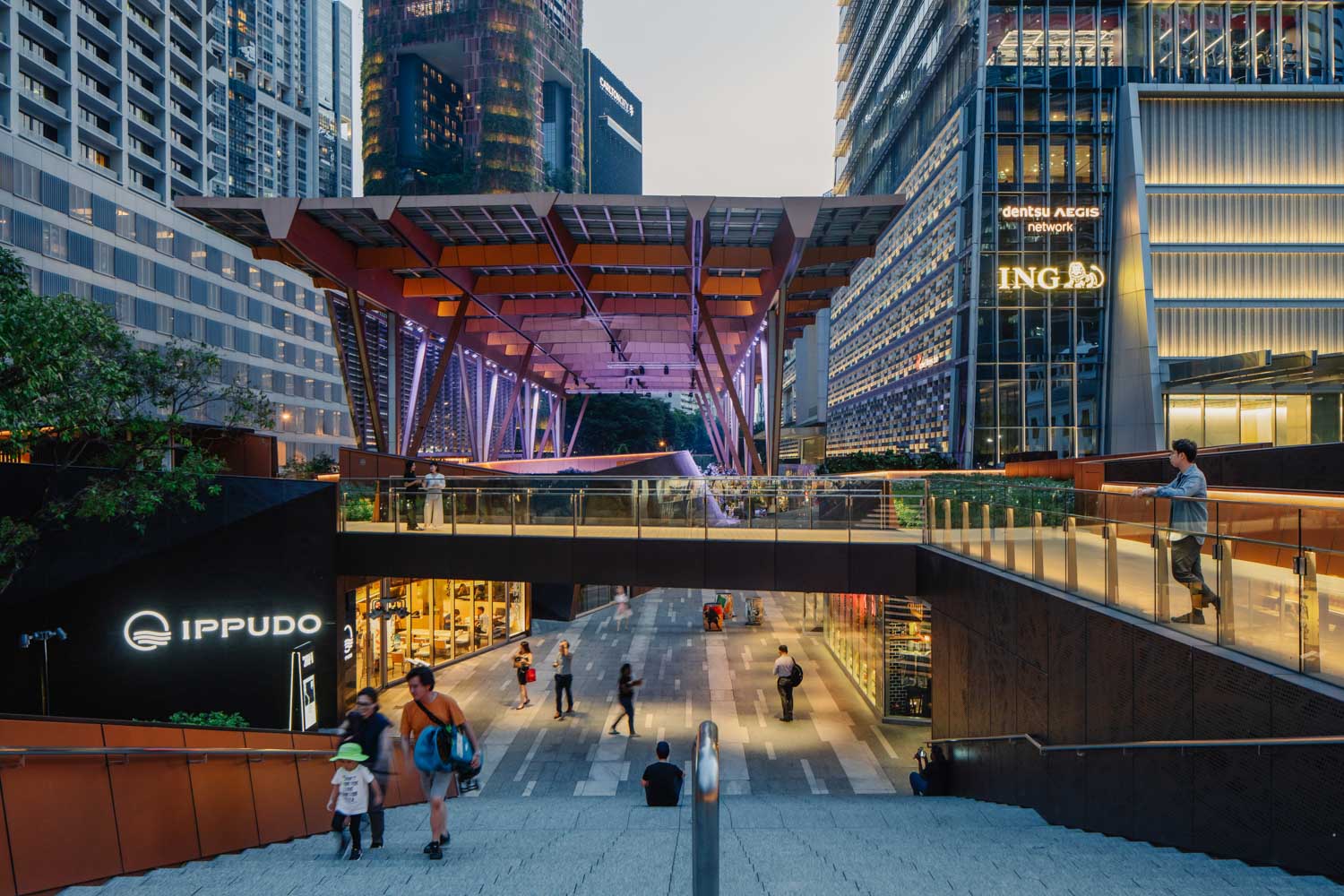
Guoco Tower | Photo: Khoo Guo Jie
art4d: How does cultural sensitivity play in sustainable design?
NM: Understanding the cultural fabric is so important to achieving the results we have discussed. This transcends industries and geographies. We all must be more culturally sensitive, respectful, and aware. We also must be vulnerable and open enough to constantly learn and educate ourselves about cultural distinctions.
When working in a country like Thailand, we immerse ourselves in the nuances of the local culture, lifestyle, and successful practices. Rather than imposing our preconceived notions, we collaborate with you to synthesize these insights into new, globally relevant typologies.
In Thailand, the emphasis is on elevating structures and incorporating greenery to naturally cool spaces. This involves strategic design elements like deep overhangs and shaded communal areas, ensuring a comfortable living environment. We must also understand ‘future culture’ and how rapidly changing technology can influence a building or city. Our approach is rooted in this cultural context—past, present, and future.
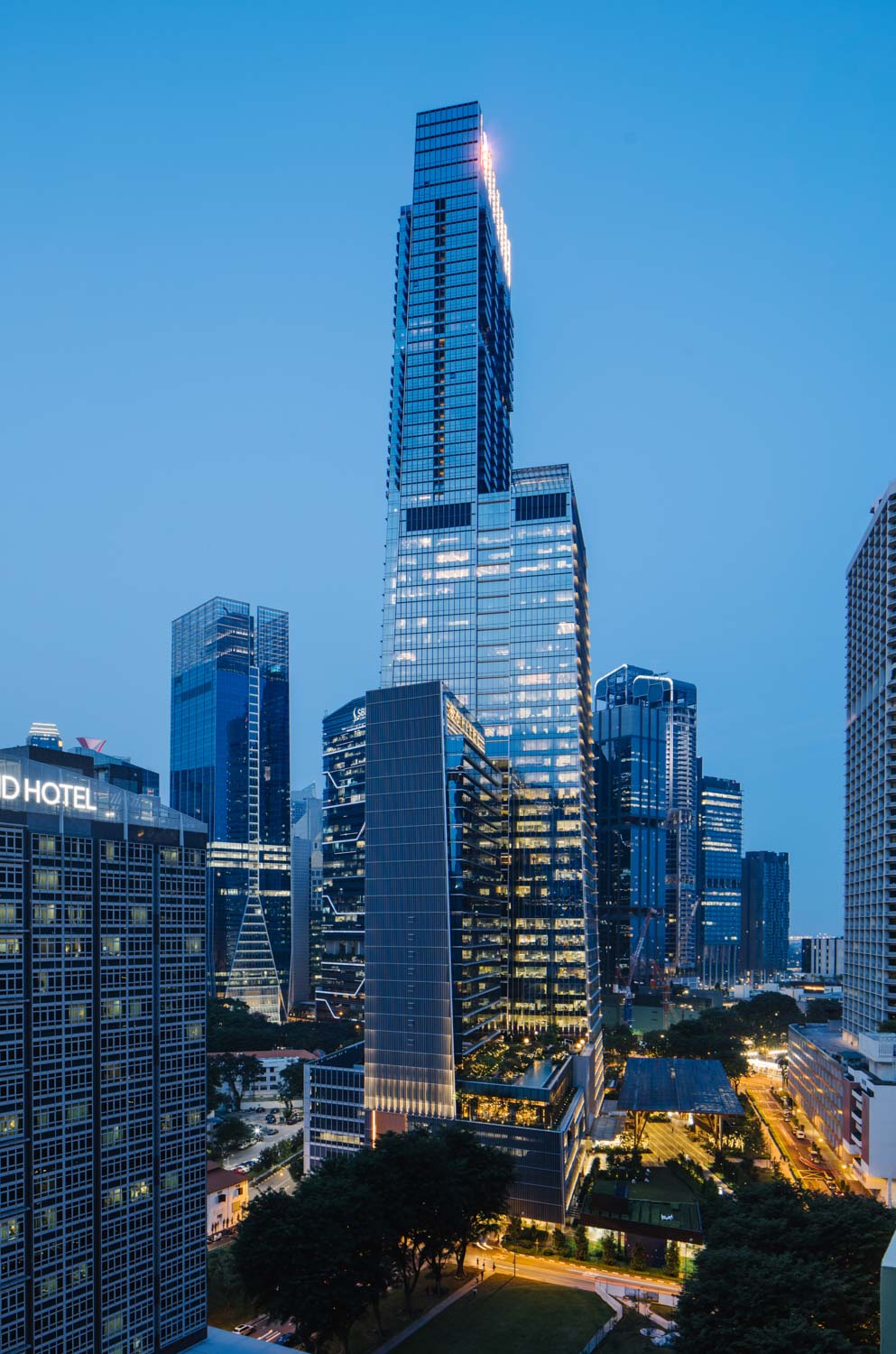
Guoco Tower | Photo: Khoo Guo Jie
art4d: Sustainability is often associated with being expensive in Southeast Asia which makes it hard to achieve sustainable design. How can you push this idea in the region?
NM: In the short term, the investment can be higher. Initial capital outlay for specific building systems might be elevated, but the strategic approach is aimed at shaping an economic model with long-term benefits and reduced costs. Prioritizing the creation of healthier spaces carries benefits that far surpass the initial expenses, ultimately safeguarding our economy.
At SOM, our advocacy extends to embracing clean energy and innovative concepts such as the 15-minute city and compressing urban spaces to mitigate travel issues. Our stance involves a fundamental shift towards renewable materials like timber, reintegrating nature into our structures, and advocating for buildings that generate energy. Addressing these aspects collectively and at all levels is vital, but there is no singular solution in the quest for sustainable urban development—yet.
art4d: What do you mean by advocating all levels?
NM: A shift in our economic approach is essential. Beyond architects and designers, our industry involves vital contributors, like clients, contractors, and so many others, who collectively shape our cities. The responsibility is on everyone to grasp the profound impact of sustainable buildings and cities on fostering a better, healthier life. Advocacy is not exclusive; it’s our obligation to champion this understanding, encouraging active participation and nurturing a shared commitment to this endeavor.
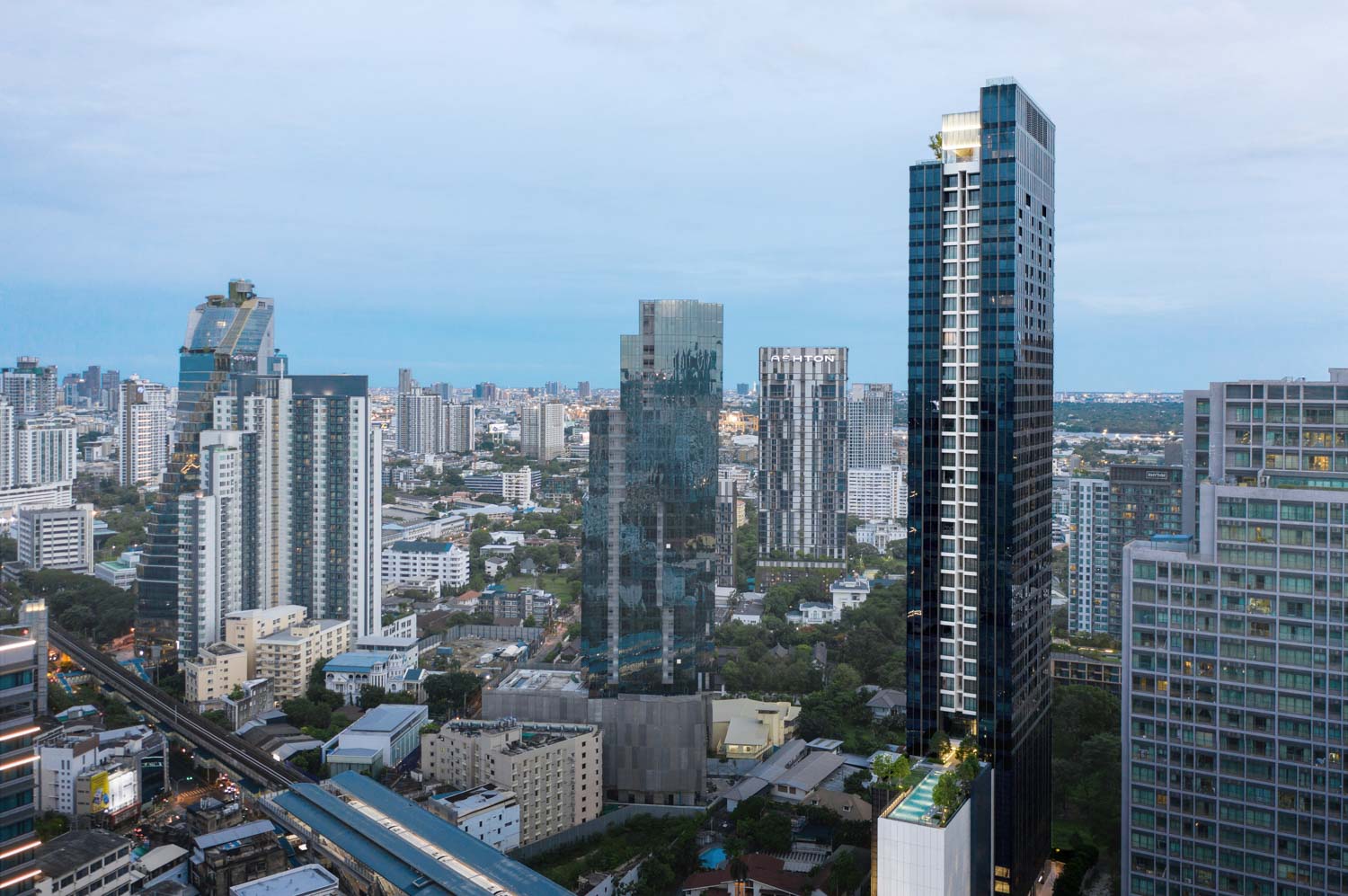
The ESSE Sukhumvit 36 | Image: Depth of field – DOF
art4d: How does SOM advocate the ideas?
NM: I think in many ways it depends on the audience. In the community, we share impactful stories and engage in thought-provoking discussions. For the public, it’s about narratives of prosperity, health, wellness, family, and food. When addressing developers, the focus shifts to sustainability’s role in an economic model that ensures prosperity. How can efficient structures, innovative materials, and healthy spaces propel a company to success?
The most compelling storytelling lies in the architecture itself. Remarkable buildings experienced firsthand, tell a narrative of health, happiness, and positive contributions to lives – this is undeniable evidence. Seeing or experiencing becomes believing. That’s what we persistently advocate.
Decisive action is important now. It’s about making choices that secure the well-being and prosperity of future generations. Endless cycles of demolishing and rebuilding are just not sustainable. Our focus should be on creating resilient buildings that endure, contributing to the prosperity of generations far into the future.
art4d: So to build is not to destroy?
NM: Exactly. Building is the art of creating an enduring narrative, adaptable over time, centered around a timeless legacy that offers overwhelming benefits in the long term, spanning environmental, health, and economic dimensions. It’s a deliberate move away from fleeting solutions, emphasizing sustained impact, and lasting contributions.
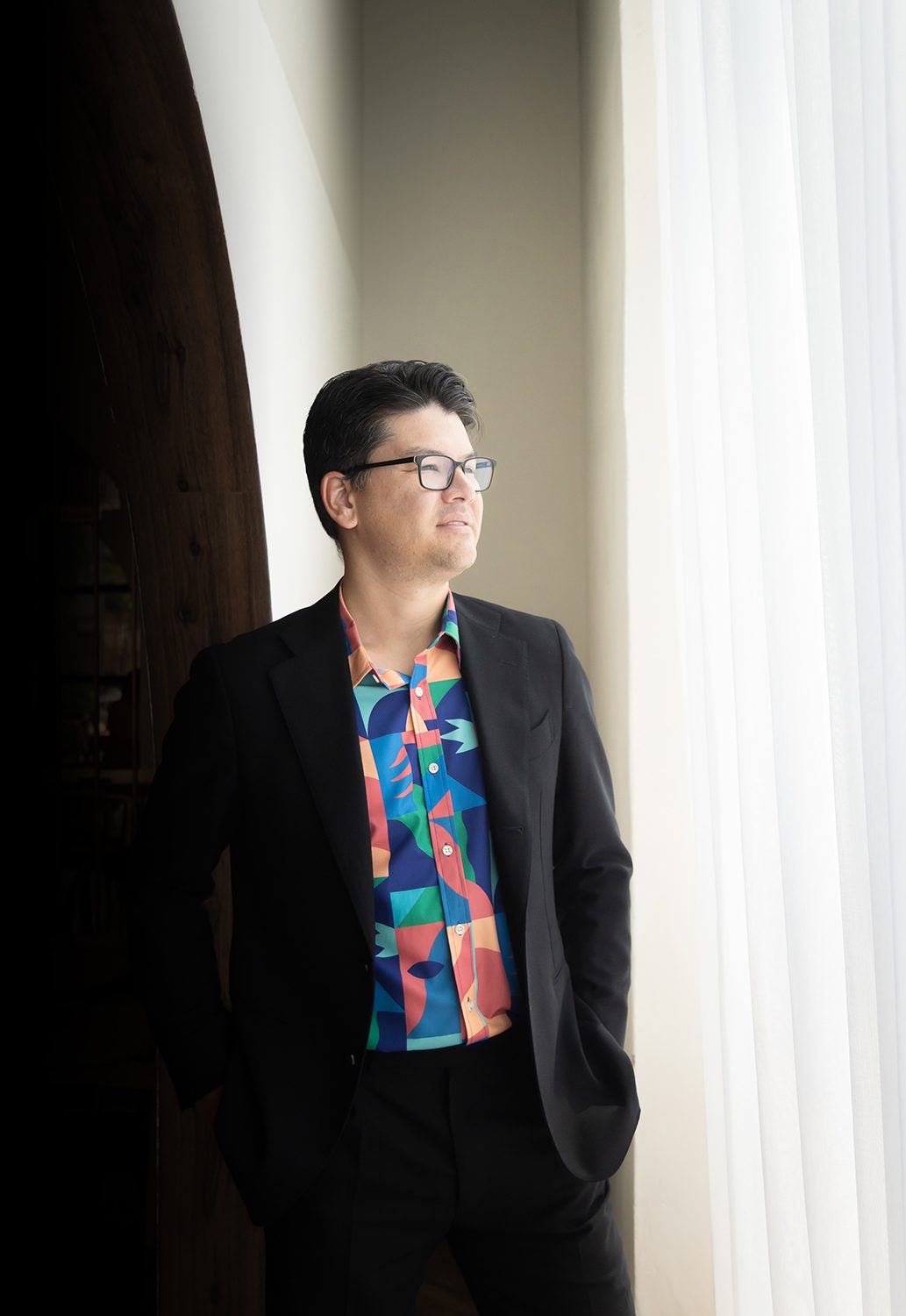
Photo: Ketsiree Wongwan

 Photo: Ketsiree Wongwan
Photo: Ketsiree Wongwan